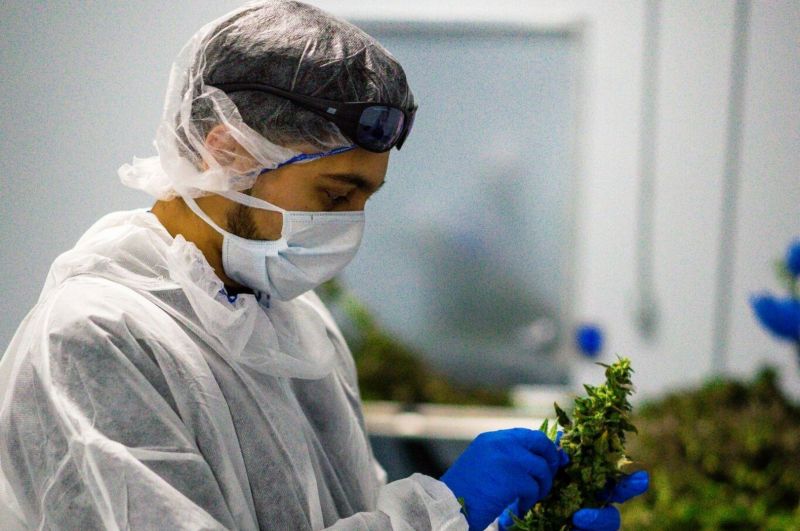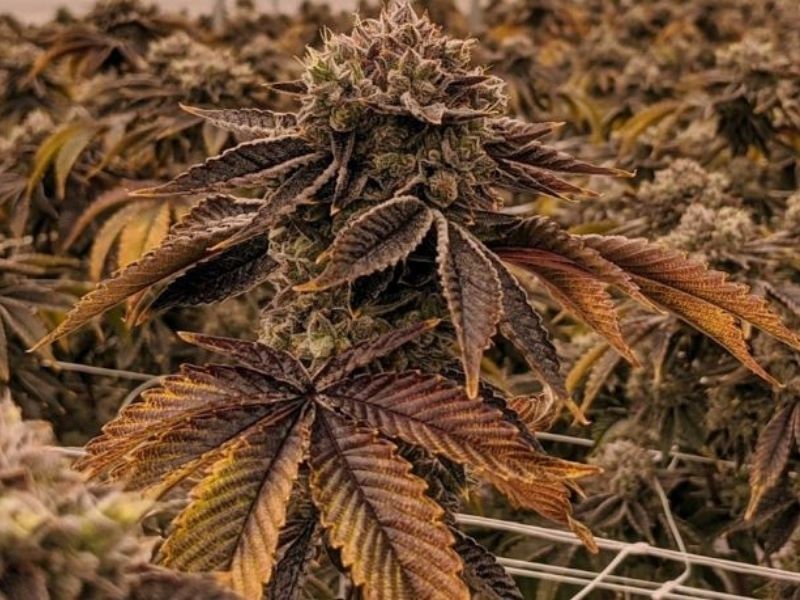
24/05/2022 Jagmeet Raina, Cannabis Master Grower shares the elements of art and science that come together to cultivate the best quality of cannabis.
As a highschooler, Jagmeet always wanted to grow cannabis and now after growing thousands of species of plants in both indoor and greenhouse environments and cultivating top quality cannabis for the past 10 years, it’s safe to say he’s been living his dream. Jagmeet, now the master grower for Bathera farms talks to us about his new office space, which is a swanky 64,000sqft. of indoor cultivation space retrofitted with Fluence bioengineering's VYPR LED lighting where his role is to lead cultivation and production and produce the highest quality cannabis possible. Read the article to know more about Jagmeet Raina.
[[relatedPurchasesItems-36]]
How did you start your journey with cannabis?
My journey with cannabis started about 15 years ago. I was first fascinated with the fact that there were cultivars with flavour profiles of lemons, mangoes, bubblegum, blueberry, apple pie, grape etc. To me to have a single species of a plant with such diversity in aromas, got me very intrigued. Then to learn, the effects of the plant can vary widely as well; from sativa dominant chemovars which lead to a sense of well-being, energetic to the sedative, relaxing indica chemovars. In addition to this, the mystique of cannabis during prohibition drew me toward the plant even more.
Can you tell us about yourself and what is your role as the Master grower?
My name is Jagmeet Raina and I have been working in the field of horticulture for the past 10 years. I have experience growing thousands of species of plants in both indoor and greenhouse environments. I have worked with everything from tropical orchids to vegetable crops, but my area of present expertise is cannabis cultivation. My role as the Master Grower, is to lead cultivation and production to producing the highest quality cannabis possible.
What is unique about the location where you cultivate and what medium do you use as a grower?
Batherafarm has over 64,000sqft. of indoor cultivation space retrofitted with Fluence bioengineering's VYPR LED lighting. Indoor cultivation of cannabis allows for more control of the crop via better management of environmental parameters and irrigation strategies. The growing media is determined via the results of preliminary cultivar trials. It is fascinating to see the variation in both morphological and phenotypical of a cultivar under different mediums and lighting. I have some cultivars that prefer cocoa, others like rockwool and some prefer a peat-based soilless medium.
What measures do you follow to maintain the standards?
The measures to maintain standards are our internal Standard Operating Procedures are catered specifically to cultivar to ensure that product quality always meets/exceeds standards. A close attention to the crops, via multiple crop walks a day.
What problems do you face as a master grower and how do you handle them?
The biggest challenges would be to stay on top of future market interests. My best way to be on top of them is to put myself in the consumer's position. I am always trying the newest flower on the market to ensure I know what is available to the consumer and how my product will stand against the best of the best. If the product will not hold its own against the best of the best, I would not be comfortable with it on the market.
What is the process after the plant is ready?
Once the crop is deemed ready for harvest by its traits, the process can go a few ways depending on the final outcome. If the cannabis is to be grown for dry flower purposes, the next step in the process would be to harvest the inflorescence and prepare it for a hang dry. The goal is to dry the flower down to adequate moisture for a smooth smoking experience yet not have enough moisture to potentially lead to mold issues during storage/packaging.
If the flower will be used in extracts, some producers prefer to flash freeze the inflorescence and extract the cannabinoids and terpenes from the plant while frozen. The benefit to freezing and not drying the flower, is that it helps preserve volatile terpenes that are lost via drying and processing.

According to you, growing cannabis is an art or science and how?
This is a great question which I tackle on a daily basis. I believe growing cannabis requires both an artistic angle and a good scientific background. Dialling in a crop requires close attention to detail via detailed measurements but this can also be done via 'feel'. Working in greenhouses growing up there was a lack of equipment to help aid in the measurement of these parameters. This resulted in developing the 'feel' for environmental parameters such as Temperature, Humidity, Lighting intensity, Soil moisture content, nutrient deficiencies, and more. Now when you have measurability, it gives you the confidence to grow at a large capacity.
What is terpene level and how does it help a patient? What are terpene levels and THC percent of the plants you grow?
Terpenes are secondary metabolites that are found naturally in Cannabis and other organisms. These compounds are what we usually associate with scents, aromas and flavours. Certain terpenes have been known to interact with neurotransmitters and cell membranes. Studies in laboratories have found significant pharmacological effects on mice after the inhalation of terpenes. There is still quite a bit to be learned about the synergy of cannabinoids and terpenes in the experience.
The terpene levels of the cultivars I am growing range from 3.5-8% and THC range is between 27-33%. These are hard to find as most breeding in Cannabis has been focused on either attaining the right flavour profile or attaining high THC, much rarer to find both.
What is your main focus as a master grower?
The primary focus is to provide the optimal conditions to produce the highest quality of cannabis possible, on a large scale.
This starts by selecting the ideal genetic stock, which is one of the most important parts of controlling the potential quality of the final product. The selection of our genetic stock is very important, looking at traits like secondary metabolite production, psychoactive experience, visual appearance, disease and pest resistance, and other properties which may lead to less than ideal outcomes. Then the focus is on providing all the ideal environmental conditions and irrigation strategies to facilitate the cultivar to perform to its best ability without limiting any growth factors. The position also requires tasks such as overseeing production, quality control, product development, sourcing quality raw materials, training staff, and much more. I want to ensure that the product leaving my hands is the best it possibly can be. I want the product to represent the quality of flowers I seek out and enjoy.
How has cannabis helped you in your life?
Cannabis has helped me in numerous ways in life. First, it has made me a more compassionate and understanding individual. It really makes me reflect on my interactions with individuals throughout the day. In addition to this, it aids me with visual acuity and pattern recognition. When I deal with late-night insomnia, cannabis is usually one of my first remedies. I pick up one of the heavier indica cultivars with a gassy profile (usually an OG kush cross or variant) to help ease me both mentally and physically into sleep.
What message would you like to give to anyone who wants to make it into the industry?
The message I would like to emphasise is to never give up on your dreams and keep striving for perfection. I used to dream of growing cannabis as a legal profession in high school, years prior to cannabis legalisation. Now that it is a reality, the two things I would credit to this would be confidence in my own abilities and the drive for perfection. In addition to this never compromise when it comes to plant health as this will result in compromised product quality.
Interviewed by Prithvi Nagpal, Editor & Sommelier, Beverage Trade Network
TAGS:






